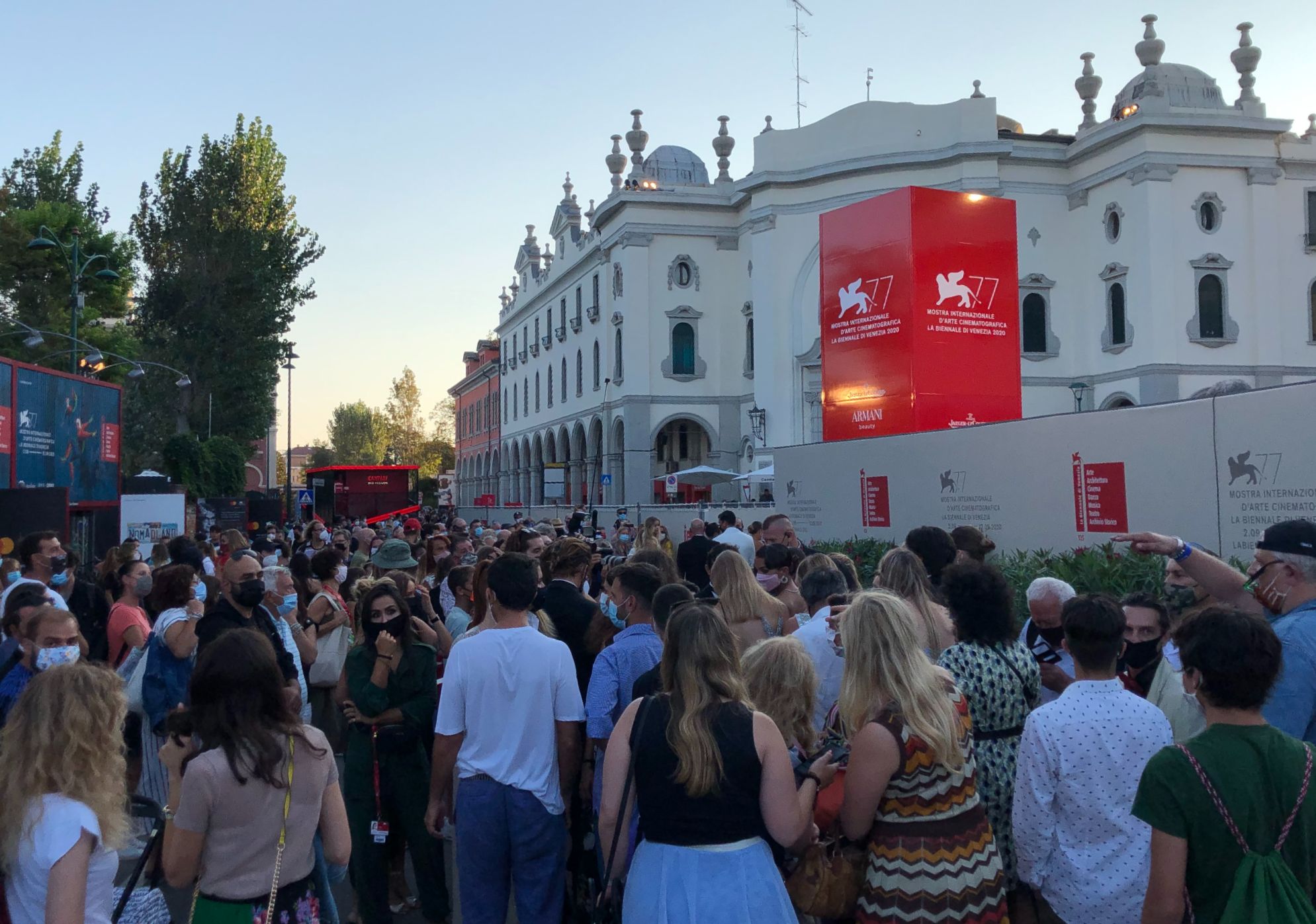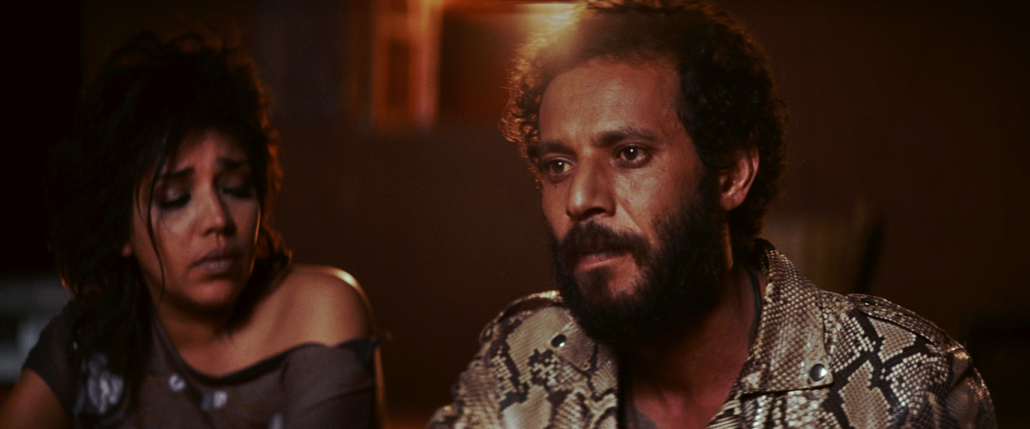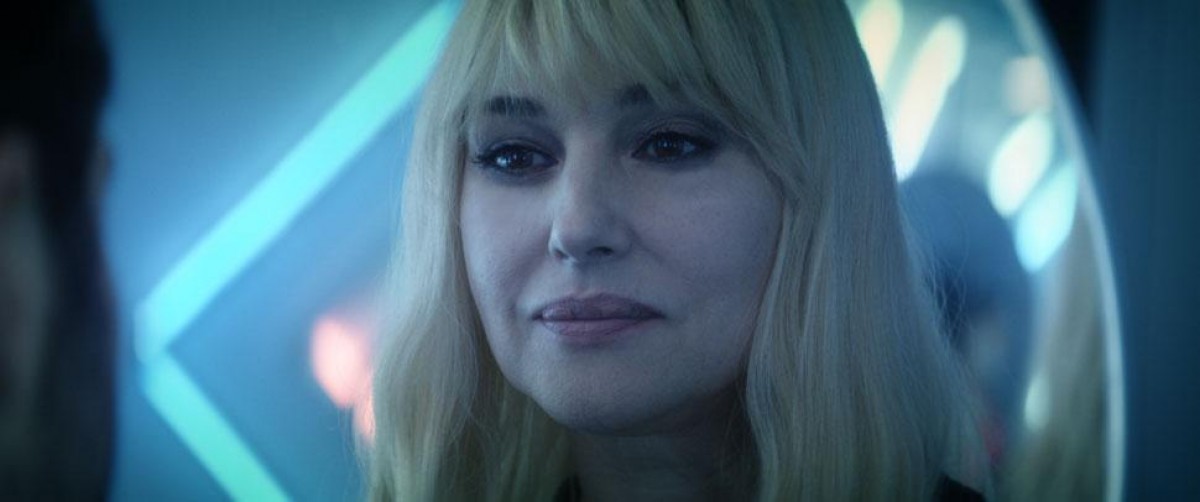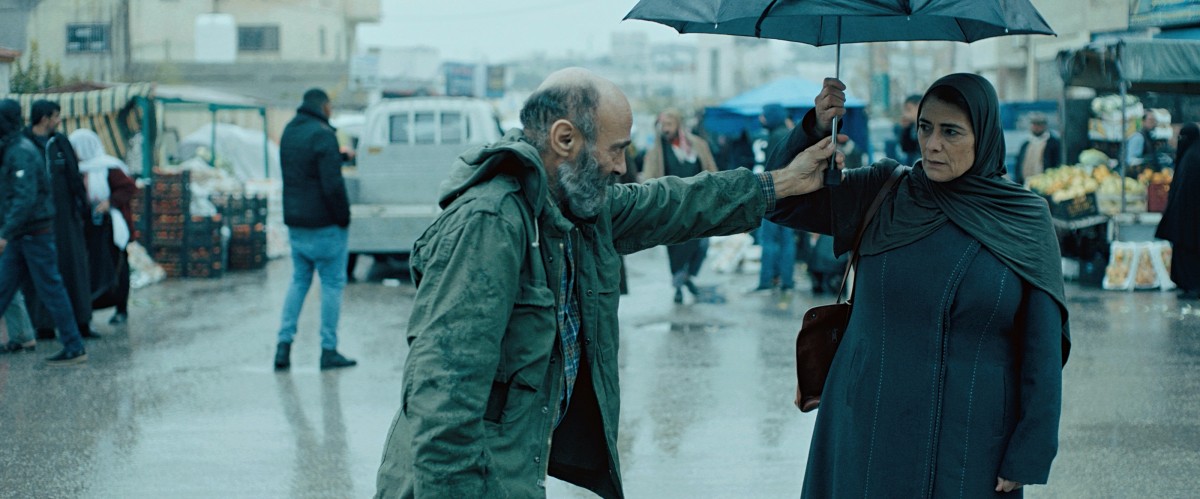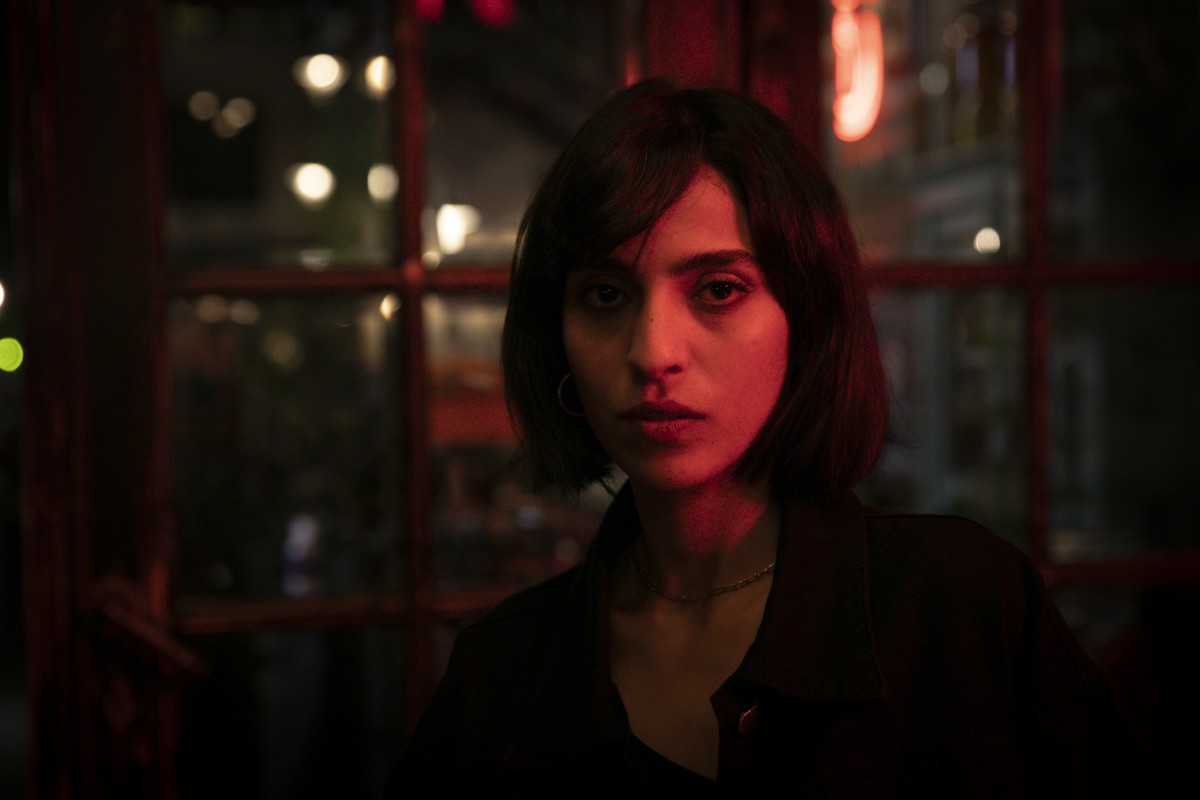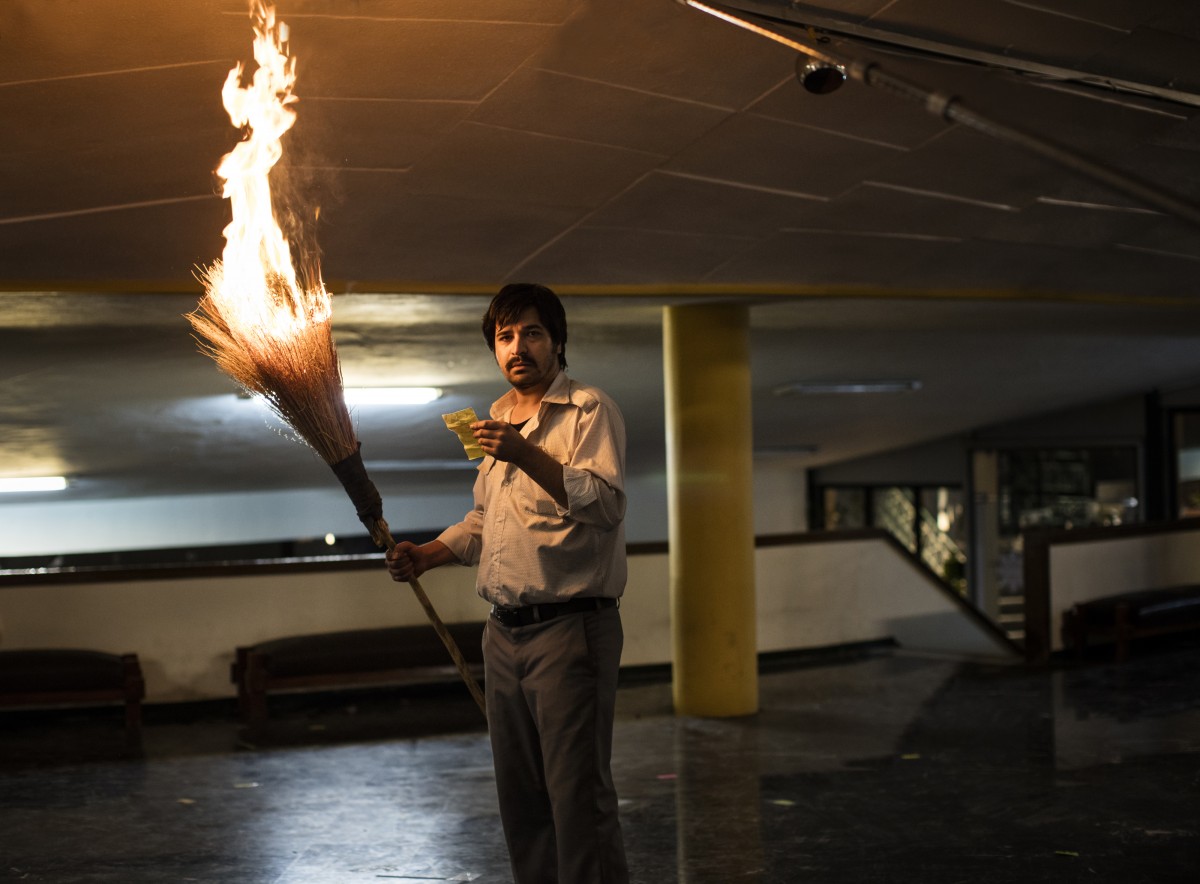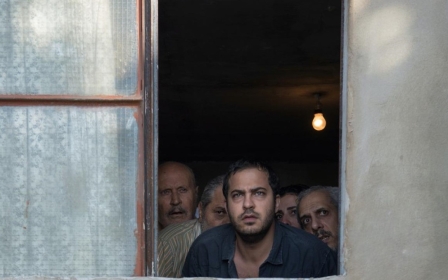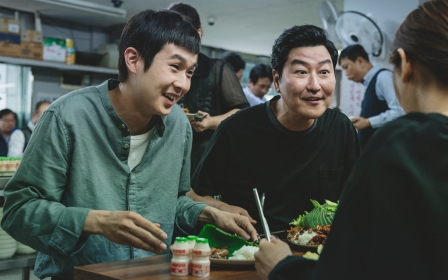Venice film festival defies the pandemic but Middle East movies disappoint
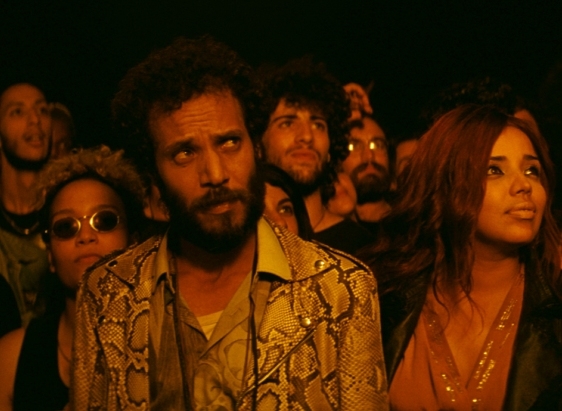
This year’s Venice Films Festival, its 77th, was also one of its most memorable – if not a particularly ecstatic one.
The venue for the first major global film event since the coronavirus pandemic was the PalaBiennale, a temporary site set up to host large public screenings with a capacity of 1,760 seats.
The opening film was Gia Coppola’s, Mainstream, an atrocious American social media satire that was one of the hottest tickets - at least until the scathing reviews were published.
Unusually long queues at the venue eliminated any social distancing: according to the new festival rules, theatres could operate at half capacity, which still meant more than 800 people, including the elderly, crammed together. The ambience was uncomfortable: was it worth the risk? In those fleeting moments, Venice felt like a disaster waiting to happen.
At Venice, going to the movies was not just a defiant act against annihilation but also a reaffirmation of humanity
But by the end of the festival, the atmosphere was radically different. The industry delegates and moviegoers were more at ease, having adapted to the face masks and security checks.
Gone were the apprehension and caution of the early days, replaced by a contagious celebratory sense of insubordination.
At Venice, going to the movies was not just a defiant act against annihilation but also a reaffirmation of humanity; a reminder that sharing that magical undertaking of creation which is movie making, of maintaining that sense of community, is at the heart of what it means to be alive.
It was very much a European affair, discriminating against attendees from outside the continent. Arrivals from one of the EU’s designated safe countries, such as Tunisia or Japan, were forced to apply for a working visa and only allowed to stay for five days. In contrast, attendees from France, where daily cases briefly surpassed 10,000 last week, were allowed in with no stipulations.
Other European festivals have begun to put their own plans in place, including San Sebastian (on 18 September), Berlin in February and Karlovy Vary next summer. But while American studios were absent due to the US's uncontrolled coronavirus crisis, it didn’t lead to a weaker Venice lineup, instead allowing small masterpieces that might otherwise have been overshadowed to enjoy more of the limelight.
Cinema remains in flux, and it’s foolish to make grand predictions based on the success of one major film event. But what is clear, as cinemas tentatively start to reopen across Europe, is that 2020 has seen a shift of power away from Hollywood. It remains to be seen whether the US is brave enough to take the risk and occupy this vacuum.
The Middle East and North Africa remains unsure of which direction to take when it comes to reopening movie theatres and promoting festivals.
At the time of writing, Marrakech in December has been cancelled; Carthage in late October is organising a best-of edition with films from previous editions and no competition; while the fate of Egypt’s festivals (Cairo in November and Gouna in October) is as yet unknown despite the organisers’ insistence that they will take place.
That paucity of programming was echoed in the quality of MENA films at Venice which, aside from Ghosts, directed by Turkey’s Azra Deniz Okyay and winner of the Critics’ Week section, were a hodgepodge of underdeveloped ideas and dated aesthetics that merely trod on familiar themes, if at times in unfamiliar forms,
In many instances, the drama playing outside the theatres regarding the future of cinema were far more compelling than the familiar stories from the region of underage labour, wars, and refugees.
Zanka Contact
Moroccan Ismael El Iraki’s debut feature is a flamboyant, brassy punk romance that ranks among Venice’s biggest crowd-pleasers. Ahmed Hammoud plays Larsen, a fading Moroccan rock star with a career that has been destroyed by a heroin addiction that took away his voice. Gambling debts force him back to his hometown of Casablanca where he crosses paths with Rajae (music star Khansa Batma, winner of best actress at the Horizons competition), a prostitute with a heart of gold yearning to break free from the clutches of her pimp Said (Said Bey).
From the get-go, Zanka embraces rock movie conventions while intentionally avoiding any attempt to subvert them. We’ve seen this story multiple times before, if not in such an inherently Arab context nor with such a culturally specific cadence.
El Iraki cranks the volume up to 11 and it never dips throughout without compromising the emotional integrity of the story.
Every scene brims with swagger, coolness and energy, anchored by fierce, uninhibited performances from its two magnetic leads. At 120 minutes, Zanka Contact could have lost some running time, but overall, Zanka Contact is unquestionably the most entertaining Middle Eastern feature of the year, marking El Iraki as a real talent with highly distinctive vision and a refreshingly atypical voice.
The Man Who Sold His Skin
Gifted Tunisian Kaouther Ben Hania came to Venice with her fifth feature The Man Who Sold His Skin, generating the kind of buzz few Arab films receive.
Hot on the heels of her Cannes contender, Beauty and the Dogs (2017), and with a cast fronted by Italian superstar Monica Bellucci, this satire is about a down-on-his luck Syrian refugee (Yahya Mahayni, winner of best actor award in Horizons) who is transformed into human art when a degenerate American artist tattoos a Schengen visa on his back.
But what eventually became one of the hottest tickets at Venice was also its worst Middle Eastern film.
The warmth, inventiveness and incisiveness of Ben Hania’s earlier work are nowhere to be found in this broadly sketched, naively conceived art satire that knows little to nothing about the art world.
Scoring zero in originality – the plot is an amalgam of Ruben Ostlund’s 2017 Palm d’Or winner, The Square, and Denys de La Patelliere’s 1968 comedy, Le Tatoue – nearly every element of the film fails, from the awkward wooden dialogue, the abysmal performances (Bellucci has never been worse) and the unintentionally ridiculous set design.
Like Beauty, the world of Ben Hania is bafflingly black and white. The western artists, curators and connoisseur are all exploitative, greedy, power-hungry orientalists; and the Syrians are victims of a war they didn’t choose to be part of.
This is a work with no nuance whatsoever: everything is one-dimensional, blunt and in your face; and the story’s most basic element – the power dynamics governing the relationship between the western artists and the commodified Syrians – is never explored.
What it ultimately amounts to is an inane, shallow satire that neither has the wit nor intelligence to communicate anything of conviction about the commodification of the Syrian war.
Given that the art world is seldom explored in Arab cinema, interpreting Ben Hania’s caricaturish portrayals as an intended, self-aware conceit is difficult to swallow. Ultimately, the director’s ornamented treatment of her Syrian characters feels no different than her exploitative western artist.
Gaza Mon Amour
Palestinian brothers Arab and Tarzan Nasser did not win many fans with Dégradé, their obnoxious rip-off debut of Nadine Labaki’s Caramel. The duo fare better with their sophomore effort, a subtle minimalist comedy about a late-life romance between a tailor (seasoned star Hiam Abbas of Ramy and Succession fame) and a lonely fisherman (Salim Daw from Fauda) set against the dystopian-like Gaza landscape.
A subplot involving the fisherman’s discovery of a phallic-shaped ancient statue that becomes the object of contention between him and the government adds an element of political satire to the proceedings.
Quiet in tone and emotionally restrained with a washed-out colour palette, Gaza is worlds apart from the brothers’ loud, ostentatious debut: more mature, more finely calibrated, more aesthetically enterprising. The chemistry between Abbas and Daw carry the drama, and the brothers’ treatment of the budding romance between two lost souls finding a new-found sense of purpose in each other is commendably gentle and sensitive.
The narrative, however, is minimalist to a fault, excising much-needed exposition, while the political commentary is largely one-noted, undeveloped and lacks bite. Like the other Palestinian film in Venice, 200 Meters, Gaza Mon Amour has a lot of unfulfilled potential, but possesses enough charm and sanguinity in here to overlook its flaws.
Notturno
Gianfranco Rosi has established himself as Italy’s grandmaster of documentary filmmaking having won Venice’s Golden Lion and Berlin’s Golden Bear awards respectively with his last two films, Sacro GRA (2013) and Fire at Sea (2016).
After shedding light on the plight of Arab refugees in his last outing, here Rosi has directed his camera towards the Middle East itself, documenting the lives of the forgotten, marginalised souls living on the borders of Syria, Lebanon, Iraq and Kurdistan.
The various characters he presents – female soldiers, mothers mourning lost sons, fishermen, traumatised child survivors of Islamic State, a teen doubling as a bird-dog for affluent bird hunters – are captured in striking, meticulously staged frames set against the diverse vistas of the region. No explanation of the nationality and whereabouts of these characters are given, a gesture intended to indicate the shared suffering.
Rosi’s frames are undeniably beautiful and there’s a palpable empathy for his subjects, but it all ultimately amounts to very little. There’s absolutely nothing new or illuminating that Rosi unearths or shows in his Middle Eastern expedition, certainly nothing remotely different from what other Arab filmmakers have explored with more depth and urgency.
His intentions may be earnest, but his overall prettified representations of the region is exceedingly reductionist, eliding the grave complexities that in reality are not as uniform, and certainly not as static.
By the end Notturno is little more than an inert, hollow endeavour: one is compelled to ask it would’ve been granted this competition slot had it been directed by an Arab filmmaker.
Laila in Haifa
Veteran Israeli director Amos Gitai’s latest competition entry is an operatic panorama of the intersecting Israeli and Palestinian lives residing in his hometown of Haifa.
Set in a real-life inclusive bar-cum-art gallery, this ensemble drama unfolds during the course of a single evening as Arabs and Israelis dally around each other, negotiating their positions both within this democratic space and between each other.
Gitai’s Haifa is populated by a diverse galaxy of characters: a Palestinian art curator; the Israeli photographer she’s having an affair with; the old rich husband; a Palestinian man and a sympathetic Israeli woman who end hooking up; two gay lovers hesitant to come out with their relationship to their respective communities; and an angry Palestinian girl giving hell to anyone foolish enough to enter her orbit.
It’s a fascinating, intriguing setup that, alas, is let down by campy dialogue, out of sync performances, and a few outlandish touches (the prospect of a Palestinian curator promoting an Israeli artist is far-fetched).
To his credit, Gitai doesn’t attempt to make a definite statement on the state of affairs in the occupied territories. But what starts off as an insightful portal into the fractious existence of two peoples who continue to struggle to co-exist with each other swiftly turns into a seedy, occasionally irritating, soap opera too brash to illicit the viewer’s involvement.
Sun Children (Khorshid)
Another veteran filmmaker making a comeback to the Venice competition was Majid Majidi, Iranian director of two of the most celebrated children’s films: Children of Heaven (1997) and The Color of Paradise (1999). Majidi returns to this familiar milieu with Sun Children (Khorshid), a didactic, by the numbers look at street children in Tehran that contains none of the sensitivity and visual flare of his best work.
The educational tone is set from the opening dedication “to the 152 million children forced into child labour”. Soon Majidi zeros in on the street kids, parents and teachers of a local school, charting the Herculean efforts of the instructors to protect the youngsters from their abusive parents while keeping them off the streets.
A sub-plot centring on a treasure hunt in the school’s underground tunnels strives to prevent the narrative from descending into over-sentimental poverty porn by injecting a touch of ironic magical realism. Sadly it fails.
Despite the arresting turn from the amateur children actors who are mostly real-life child labourers (12-year-old Rouhollah Zamani won the Marcello Mastroianni prize for best young actor), Sun Children treads familiar grounds, capitalising on the success of Nadine Labaki’s Capernaum by offering yet another slice of life that hides its patronising approach and self-importance in its simplistically sympathetic political message.
It leaves the audience with the sense that they have sat through a primary school lesson which fails to enlighten or engage the senses.
Careless Crime
More ambitious, and far more challenging was Careless Crime, the fourth feature by Shahram Mokri. Less of a genre film and more of a meditation on the different manifestations, consumption and impact of the diverse forms of moving images, the titular crime refers to the real-life 1978 attack carried out by anti-Shah protesters in the Iranian city of Abadan who set fire to a cinema in protest at the growing western influence and ended up killing 420 people.
Forty years later, a group of four men decide to recreate the same act and burn a cinema down. Playing out in juxtaposition to the attackers’ elaborate planning is Careless Crime, the imagined movie watched by the audience, which revolves around a group of soldiers trying to escape from the desert after their vehicle breaks down.
Nothing of tangible dramatic worth happens in either scenario. The perpetrators indulge in minute detail on how to best carry out the attack, while the cinema staff spend considerable time in casual uneventful chatter. The attackers’ political motivations are kept under wraps; in fact, the politics of the entire endeavour are swept under the rug.
What Mokri is interested in is how we nonchalantly switch between viewing different sets of images, the mechanism behind the viewing, and whether cinema still holds any kind of impact.
There are intriguing ideas on offer, but the episodic, non-linear structure of the piece and the practical absence of a narrative linking these strands together makes for a demanding, trying watch that is easy to admire but difficult to interact with.
Careless Crime, nevertheless, remains an intriguing effort from one of the most original voices in Iranian cinema – an effort that demands another viewing in a less hectic setup.
Middle East Eye propose une couverture et une analyse indépendantes et incomparables du Moyen-Orient, de l’Afrique du Nord et d’autres régions du monde. Pour en savoir plus sur la reprise de ce contenu et les frais qui s’appliquent, veuillez remplir ce formulaire [en anglais]. Pour en savoir plus sur MEE, cliquez ici [en anglais].


